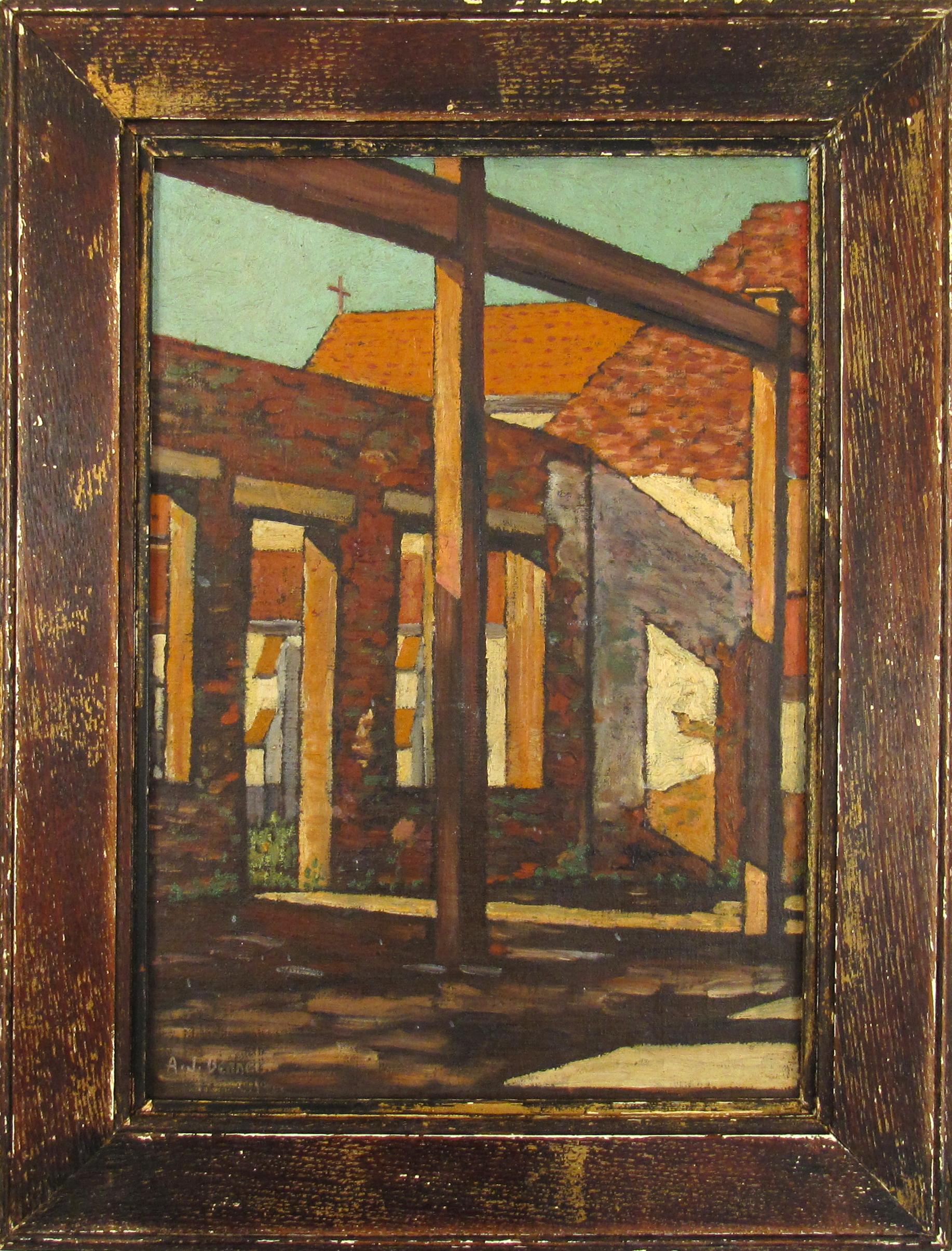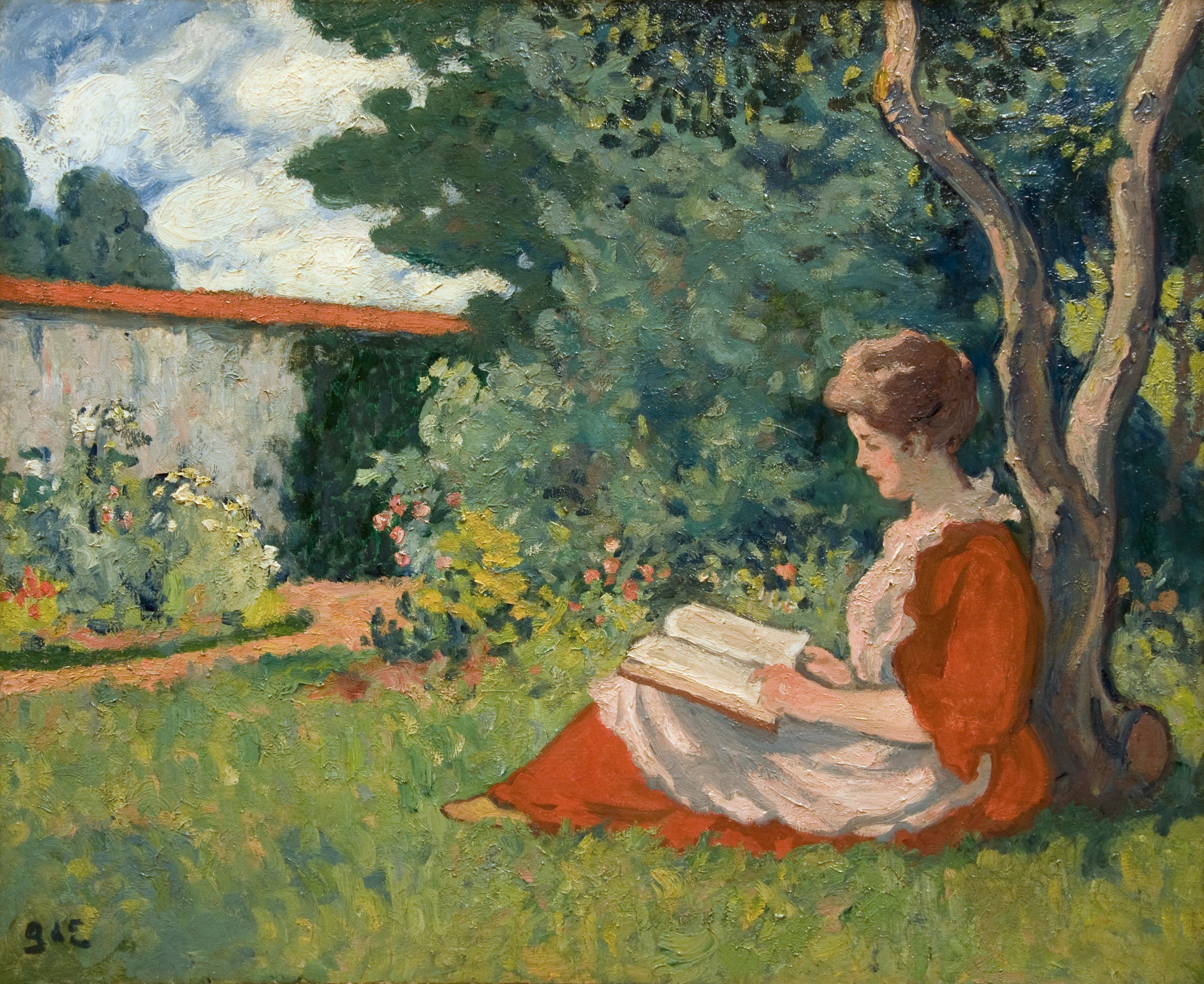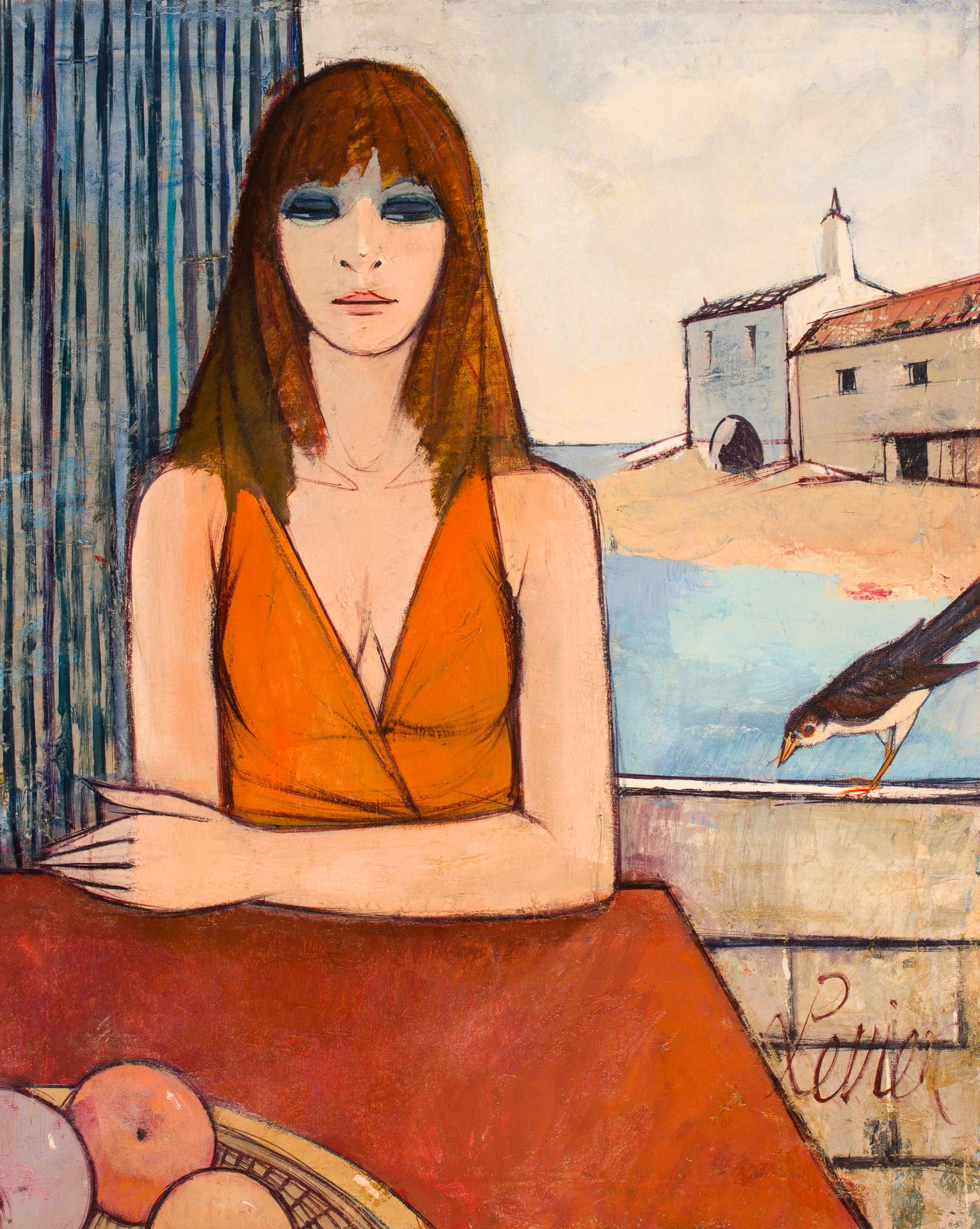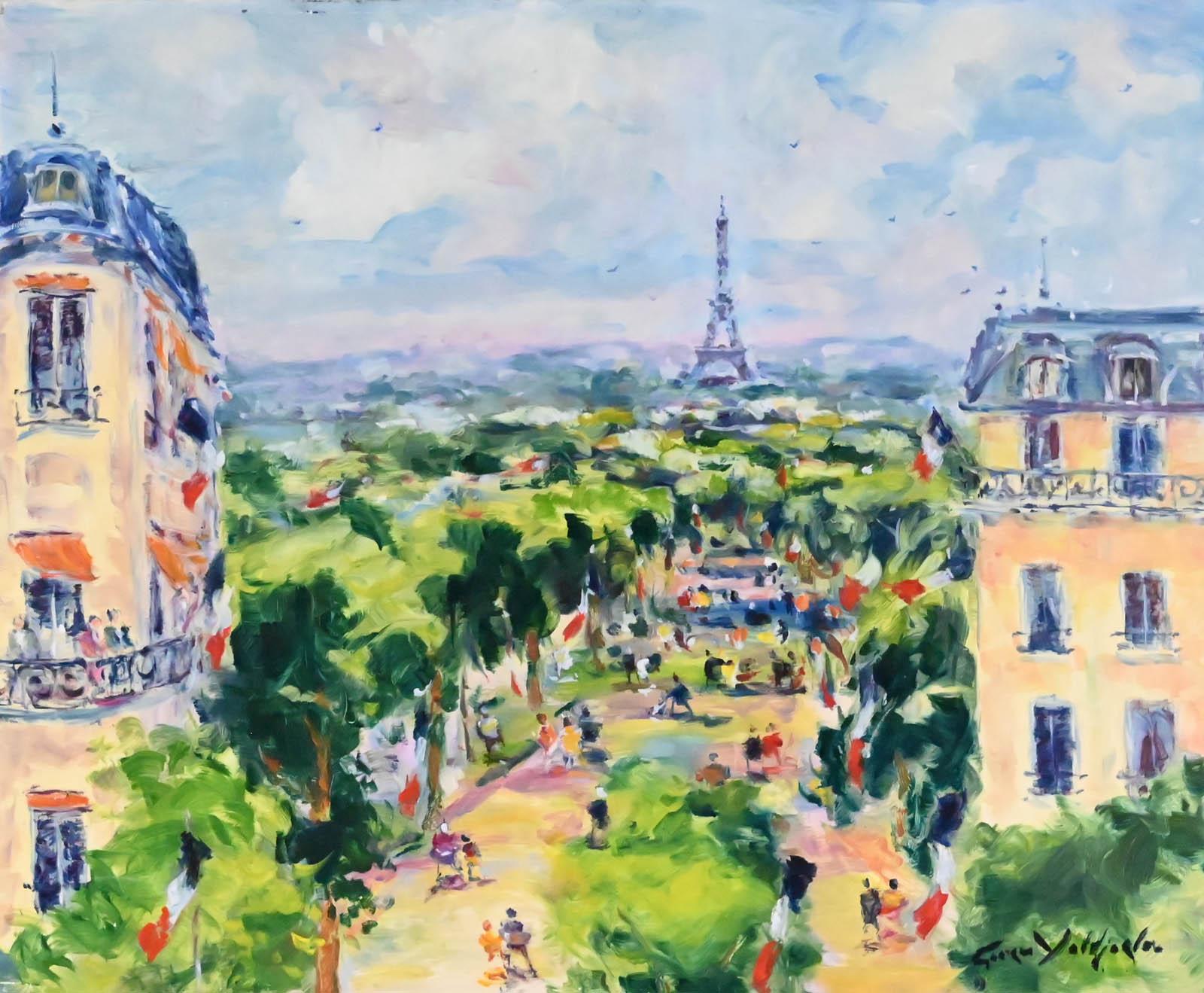Items Similar to Bathers on the Beach - Post Impressionist Landscape by Jacques-Emile Blanche
Want more images or videos?
Request additional images or videos from the seller
1 of 14
Jacques Emile BlancheBathers on the Beach - Post Impressionist Landscape by Jacques-Emile Blanchec.1930
c.1930
About the Item
Signed post impressionist oil on canvas landscape by French painter Jacques-Emile Blanche. The work depicts crowds of people enjoying a day at Brighton beach on the south coast of England. Bathers are dotted across the sandy beach with the pier on the right hand of the scene and the Grand Hotel behind.
Signature:
Signed lower right
Dimensions:
Framed: 29.5"x47.5"
Unframed: 22.5"x39.5"
Provenance:
Private collection - Italy
This work will be included in the catalogue raisonne of the work of Jacques Emile Blanche currently under preparation by Dr Jane Roberts & Muriel Molines
Blanche received training from Gervex and Fernand Humbert. His grandfather was Émile Antoine Blanche, the psychiatrist who treated the poet Gérard de Nerval on several occasions. He was awarded a gold medal at the Exposition Universelle in Paris in 1900, and was a Commander of the Légion d'Honneur. He was well known in French and British artistic circles, and married the daughter of John Lemoine, the leader of the Diary of the Proceedings ( Journal des Débats), and author of the Life of Brummel. He exhibited his works in London and Paris.
Blanche had a wide circle of acquaintances, and the list of portraits which he executed is indicative of the diversity of those who used to meet at his home: Henri Bergson; Stéphane Mallarmé; Henry Bernstein (1902); André Gide (1912); Anna de Noailles (1912); Jean Cocteau (1912); Igor Stravinsky (1915); Francis Jammes (1917); Paul Claudel (1919); Jean Giraudoux; Paul Valéry; Marcel Proust; Max Jacob (1921); Maeterlinck (1931); Debussy; Antoine Bourdelle; George Moore; André Maurois; François Mauriac; Maréchal Foch and the Princess de Broglie.
He also wrote novels, which were more or less autobiographical, and essays, such as From David to Degas; Dates; From Gauguin to the Negro Review; Journals of an Artist ( De David à Degas; Dates; De Gauguin à la Revue nègre; Cahiers d'un artiste) in six volumes, and Manet. During meetings at his studio, he used to collect any snippets that would flesh out the essays he wrote, which alternated between being sharp and emotive. He gave them in series to the magazine Comoedia, under the title of Studio Talk. It was said that he aroused tremendous debate, notably with André Lhote, a painter younger than himself, who also doubled as a critic. The latter initially attempted to define the main characteristics of the art of the 'rebellious and charming Jacques Émile Blanche,' but subsequently treated him less generously, referring to a painter 'attached to the notion of 'high-and-mighty' genre painting.' He added that this sort of painting was marvellously illustrated by Manet.
The quality of his flat surfaces, the precious greys and silvery light effects cause Jacques Émile Blanche to be compared more with Manet, whom he admired, than with the Impressionists, with whom he was compared in terms of his early works. Nevertheless, his outdoor backgrounds with traces of sometimes vivid colours have something in common with them.
In the aftermath of World War I, he spent a long time on an enormous composition entitled Tribute to those who Died in the War. It was executed in a style which was totally different to his work as a whole. He offered this work to the church in Offranville near Dieppe. He also donated around 100 of his works to the Musée des Beaux-Arts in Rouen.
He regularly exhibited in Paris, at the Salon of the Société Nationale des Beaux-Arts (also known as the Salon de Mars) from the time it was founded in 1890. At the time of the initial exhibitions held by the Société Nationale des Beaux-Arts, he rapidly gained fame by exhibiting such portraits as Paul Adam and Charles Cottet. He sometimes grouped together several members of the same family in one painting: The Painter Thaulow and His Family in 1895, The Vielé-Griffin Family, and numerous refined portraits of key figures in France and England.
Apart from this Salon, for which he was one of the first driving forces and founder members, he was later to put in a great deal of effort on the occasion of the Salon des Tuileries between 1933 and 1939, even though he was by then in his seventies and already famous.
He exhibited genre scenes, scenes of fashionable places - like Brighton or Dieppe - and racecourse scenes at the Salon des Tuileries in 1933. These included Family of Pedlars in London; Portrait of the Female Novelist Sylvia Thompson; Racecourses in Ireland; Arrival of the Herring in Dieppe; White Masts; Brighton; in 1934: Portrait of James Joyce; Grand National Steeplechase; Spring Races in England (sketch); Dieppe Beach; Outer Harbour of Dieppe in Autumn; in 1935: Rugby; Walter Richard Sickert; Dieppe; Tea Party at the Madeleine; in 1939: Love Thy Neighbour. Many exhibitions have been dedicated to him since his death, including one at the Musée des Beaux-Arts in Rouen in 1997, and one at the Galerie Philippe Heim in Paris in 1999.
Museum and Gallery Holdings:
Brussels: Portrait of the French Painter Charles Cottet
Dieppe: Sleeping Child; Fish Week
Dijon: General Mangin; The Sailing Ship
London (Tate Collection): Francis Poictevin (1887, oil on canvas, portrait); Charles Conder (1904, oil on canvas, portrait); Ludgate Circus: Entrance to the City (November, Midday) (c. 1910, oil/panel); August Morning, Dieppe Beach (c. 1934, oil on canvas); other paintings
Lyons: Portrait of Debussy
Mulhouse: Begonias
Paris (Louvre): The Painter Thaulow and his Family (1895)
Paris (MAM): The Pink Room; The Port at Le Havre; Flowers in a Vase; Still-life; Portrait of the Artist's Mother (June 1895); Portrait of Igor Stravinsky
Paris (Mus. Carnavalet): Portrait of Jean Cocteau
Rouen: Little Girl in a Straw Hat (and around 100 works, including 30 or so portraits of well-known figures); Lengthened White Rose (c. 1895); Knightsbridge, the Crossroads of Brompton Road (c. 1906)
- Creator:Jacques Emile Blanche (1861-1942, French)
- Creation Year:c.1930
- Dimensions:Height: 29.5 in (74.93 cm)Width: 47.5 in (120.65 cm)
- Medium:
- Movement & Style:
- Period:
- Condition:Very good original condition.
- Gallery Location:Marlow, GB
- Reference Number:
About the Seller
5.0
Platinum Seller
These expertly vetted sellers are 1stDibs' most experienced sellers and are rated highest by our customers.
Established in 2001
1stDibs seller since 2016
668 sales on 1stDibs
Typical response time: 3 hours
- ShippingRetrieving quote...Ships From: Marlow, United Kingdom
- Return PolicyA return for this item may be initiated within 3 days of delivery.
More From This SellerView All
- Le Moulin de la Folie a Crozant - Impressionist Landscape Oil by Paul MadelineBy Paul MadelineLocated in Marlow, BuckinghamshireSigned and dated oil on original canvas by French post impressionist painter Paul Madeline. This beautiful work depicts a mill on the bank of a river - water cascading over the rocks...Category
Early 1900s Post-Impressionist Landscape Paintings
MaterialsCanvas, Oil
- Cannes et le vieux port - Post Impressionist Oil, Landscape by Marcel DyfBy Marcel DyfLocated in Marlow, BuckinghamshireSigned figures in landscape oil on canvas circa 1940 by sought after French post impressionist painter Marcel Dyf. The piece depicts people enjoying a sunny winter's day at the port ...Category
1940s Post-Impressionist Landscape Paintings
MaterialsCanvas, Oil
- Circus Performers - French Naive Figurative Oil by Camille BomboisBy Camille BomboisLocated in Marlow, BuckinghamshireSigned figurative oil on canvas circa 1955 by French naive painter Camille Bombois. This charming work depicts circus performers - three clowns and a stro...Category
1950s Post-Impressionist Figurative Paintings
MaterialsCanvas, Oil
- Woman in Snow - Post Impressionist Oil, Figure in Landscape by Victor CharretonBy Victor CharretonLocated in Marlow, BuckinghamshireLarge signed landscape oil on canvas circa 1920 by sought after French post impressionist painter Victor Charreton, who was known as the painter of colours. The work depicts a woman ...Category
1920s Post-Impressionist Landscape Paintings
MaterialsOil, Canvas
- Ciel de Printemps - Fauvist Oil, Horse & Figures in Landscape by Jules CavaillesBy Jules CavaillesLocated in Marlow, BuckinghamshireSigned oil on canvas circa 1950 by French painter Jules Cavailles who was part of a group of artists called "La Realite Poetique". This charming piece ...Category
1950s Fauvist Landscape Paintings
MaterialsCanvas, Oil
- Environs de Marseille - Post Impressionist Sea Landscape Oil by Adolphe GaussenBy Adolphe Louis GaussenLocated in Marlow, BuckinghamshirePost impressionist oil on canvas circa 1920 by French painter Adolphe Louis Gaussen. The work depicts a boat sailing in the blue waters off a rocky coast in Marseille, France. Signa...Category
1920s Post-Impressionist Landscape Paintings
MaterialsCanvas, Oil
You May Also Like
- A. J. Bennett - Light and Shade - Post Impressionist Painting, South Africa 1919Located in Meinisberg, CHA. J. Bennett (South African, fl. Early 20th century) Light and Shade • Oil on canvas artist board ca. 42.5 x 29.5 cm • Later frame ca. 53.5 x 41 cm Worldwide shipping is complime...Category
1910s Post-Impressionist Figurative Paintings
MaterialsCanvas, Oil, Board
- Femme lisant dans un jardinBy Georges d'EspagnatLocated in Washington, DCSigned with monogram lower left * The Robert Lehman Collection at the Metropolitan Museum of Art contains more paintings (nine) by Georges D’Espagnat than any other nineteenth- or ...Category
1910s Post-Impressionist Figurative Paintings
MaterialsCanvas, Oil
- PrintempsBy Charles LevierLocated in Costa Mesa, CAA beautiful woman sits at an open window, gazing down at a small bird who has landed nearby in this serene portrait by Charles Levier. Warm orange tones are played off their complements in shades of blue, the artist utilizing several different layers of oils to create a subtle and relaxed view of a spring day near the sea. Beyond the window a small chapel sits on a peninsula, surrounded tranquil blue waters. This work, like many of Levier's, belongs to the French figurative movement of the Glorious Thirty (Les Trente Glorieuses) - the golden period of thirty years after WWII which were a time of great hope and prosperity in France. Inspired by Hollywood cinema, Charles Levier sought harmony in composition and purity of color and form. His said that his creations represented "a light and delicate world, of dark and subtle shades and colors." Levier worked in a somewhat abstracted, cubist style. Additionally he often employed the French technique of "cloisonnism" (after the French for "partition"), a style of post-Impressionist painting with bold and flat forms separated by dark contours, also seen in this work. The term was coined by critic Edouard Dujardin on the occasion of the Salon des Indépendants, in March 1888 and was commonly used by artists like Émile Bernard, Louis Anquetin, Paul...Category
Mid-20th Century Post-Impressionist Figurative Paintings
MaterialsCanvas, Oil
- Haystack with Resting FiguresBy John Maclauchlan MilneLocated in Hillsborough, NCScottish artist John Maclauchlan Milne, RSA, (1885-1957) is a contemporary of Scottish Colourists Peploe, Fergusson, Cadell and Hunter. Like the...Category
1920s Post-Impressionist Landscape Paintings
MaterialsCanvas, Oil
- Le port de DieppeBy Jacques BouyssouLocated in LE HAVRE, FRJacques BOUYSSOU (1926-1997) Le port de Dieppe, 1969 Oil on original canvas, in perfect condition, original canvas. Large size : 90 x 118 cm Signed lower left Vintage frame Provena...Category
1960s Post-Impressionist Landscape Paintings
MaterialsCanvas, Oil
- Paris, vue sur les jardins de la Tour EiffelLocated in LE HAVRE, FRGeorges YOLDJOGLOU ( né en 1933) Paris, vue sur les jardins de la Tour Eiffel Oil on canvas Size : 60 x 73cm Signed lower right Titled on the back...Category
21st Century and Contemporary Post-Impressionist Figurative Paintings
MaterialsCanvas, Oil
Recently Viewed
View AllMore Ways To Browse
Brompton Vintage
Retro Circus Party
Brighton Pier
Double Fish Vase
Girl In Straw Hat
Joyce Moore
Charles Frederick Winby
Chuck Fee Wong On Sale
Clifford Ashley
Constantin Aleksandrovich Westchiloff On Sale
Frank Usher De Voll
Frederick Korburg On Sale
Georges Dominique Rouault
Giorgio Belloni
Henri Alexis Schaeffer
Henri Bresil
Henri Robert Bresil
Henry Foley





